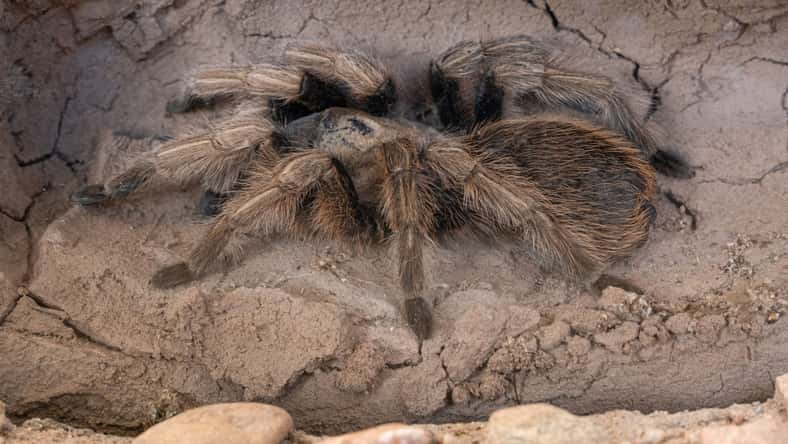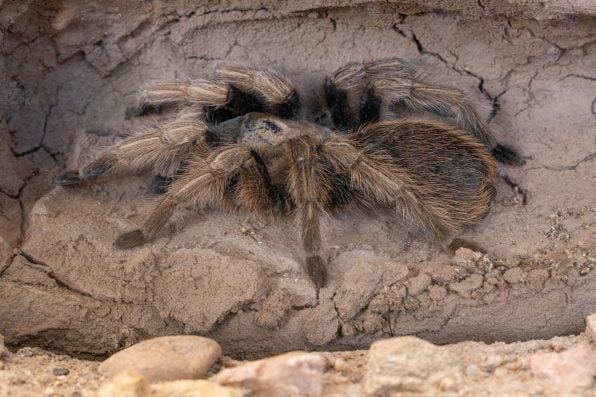If You’re An Arachnid Lover, The Desert Blonde Tarantula Is A Cute And Fuzzy Choice For First-Time Tarantula Owners: Here’s How To Care For This Unique Pet

If you’re not the type of person who gets squeamish around spiders, you may have bounced around the idea of keeping one as a pet.
Their behaviors are intriguing to observe, and they’re completely silent, so they won’t bother your housemates or neighbors unless, of course, they manage to escape and run loose in your home.
The desert blonde tarantula is probably one of the cutest and fuzziest spiders out there, the best candidate for possibly winning over someone with a fear of anything creepy and crawly. They are docile in nature, making them easy to take care of, especially for first-time tarantula owners.
The females are tan, while the males have red abdomens and black legs that span roughly five inches long. Females can live for up to 30 years. In contrast, males live for five to ten years. So, before you decide to purchase one, keep its life expectancy in mind.
These spiders are native to the southwestern U.S. and parts of Mexico. They will require housing that closely resembles their natural habitats as well as live prey.
In the wild, desert blonde tarantulas like to dig long, deep burrows, covering the entrances with silky thread. They are mostly active at night and are known for being quiet, solitary creatures.
Keep your desert blonde tarantula in its own enclosure of a five to ten-gallon plastic or glass tank with a secure top. Make sure the tank is not too tall, as these spiders can get injured if they fall from a great height.
The tank should be between 75 to 80 degrees Fahrenheit. Inside the tank, add cork bark and a small hollow log that your spider can use as shelter. You’ll also need to add at least three inches of peat moss, soil, or vermiculite, replacing it every four to six months.
Desert blonde tarantulas like to eat live crickets, mealworms, and roaches. The insects they consume must be smaller than the spider’s body.

J.A. – stock.adobe.com – illustrative purposes only, not the actual tarantula
Adult tarantulas usually eat one or two times per week. After 24 hours, remove any food that your spider hasn’t eaten. Additionally, your spider will require a shallow dish of fresh water that you will need to change out daily.
As with any tarantula, the desert blonde must be treated with caution and care. They have a venomous bite that causes pain and swelling, similar to a bee sting. Whenever they feel threatened, they will flick barbed hairs, which can cause skin irritation.
Some tarantulas are comfortable with being held, but it is not recommended to do so unless you are aware of the risks and are familiar with the proper handling techniques.
Desert blonde tarantulas typically do not have any health problems as long as their environment is kept up to their standards. These spiders go through a molting process, which can be mistaken as a health issue if you’re new to tarantula care.
During the molting process, a spider will shed their old exoskeleton and grow a new one. It might become lethargic and even appear dead. This can take a few weeks, so don’t bother your spider during that time, and don’t feed it live prey.
Desert blonde tarantulas are excellent pets for people who want something low-maintenance and long-lasting, but if you are looking to cuddle your pet and engage in frequent interaction, then this spider may not be for you.
Sign up for Chip Chick’s newsletter and get stories like this delivered to your inbox.
More About:Animals





